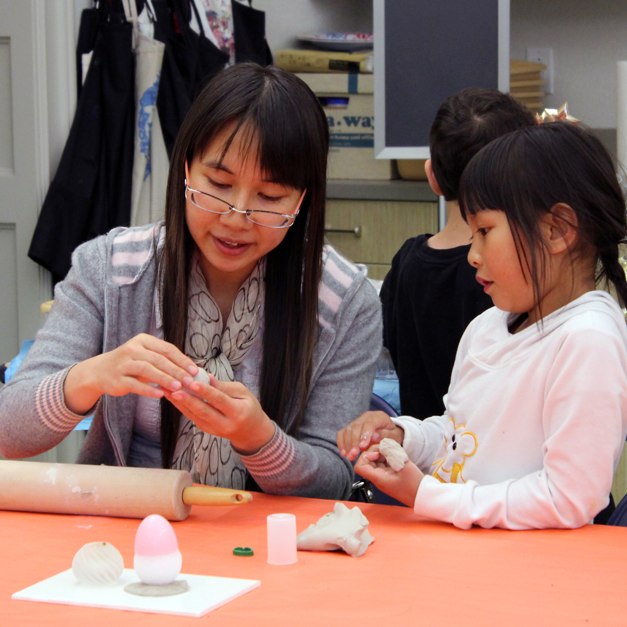
Everything around us is an opportunity for wonder and curiosity. Slow noticing is all you need to unlock this power.
Right now there’s a proliferation of resources for learning at home, and for taking care of ourselves through the challenges of this moment. Paradoxically, efforts to help us through this time can overwhelm.
Recently I had a reminder that sometimes the simplest strategies are what we need. That is why we are sharing our most fundamental, simplest strategy for slowing down and really looking. It can be an entry point into an investigation that can last five minutes or a lifetime. It can also be a gift of being present with just our own senses.
ODIP – Observe, Describe, Interpret & Point to Evidence – is the basis of how we explore art, and it works for looking at *anything.* From portraits to pine cones to political cartoons, this routine helps you to carefully notice, describe thoroughly and without interpretation, and then consider many possibilities. Here’s the basic process:
1) Look closely, in silence, for one minute. Start by letting your eye land wherever it is drawn, and then let it pass over every part of the piece. Take in as many details as you can. If you feel you’ve “noticed everything,” try just zooming in on one quarter of the object at a time and work your way clockwise.
2) Share what you notice (or write if you’re looking alone). Be sure to only share observations, not what you think they mean.
3) Once you have shared many observations (and listened to the observations of others if you are in a group), begin to weave them together to shape a possible interpretation – What might be going on here, and what makes me say that?
Close by looking again at the object. Notice how it seems different now that you have gone through this process.
Teachers, if you want a more in-depth look at how you might use this in instruction, you can check this link. You can use this to:
– Cultivate mindfulness
– Support observation and reasoning with evidence – core competencies for any discipline
– Freshly consider familiar objects
– Approach a perspective that is unfamiliar or might be uncomfortable to you
– Build habits of critical thinking over snap judgement interpretations
– Notice the world more deeply to inform your own creativity.
By slowing down and looking in a different way, we can nurture curiosity, imagination, and mindfulness, and the ability to suspend judgements and interpretations that can block us from considering points of view that are different from our own. How amazing is that? And you don’t need an app to do it.
– Jen Lehe is CMA’s Manager of Strategic Partnerships, overseeing programs for learners throughout their lives. Jen directed the IMLS-funded Making Creativity Visible initiative and launched the Leaders in Creativity fellowship to build teachers’ capacity to advocate beyond their classrooms. Jen holds an Masters in Arts in Education from Harvard Graduate School of Education and a BFA in Photography from NYU. When she’s not at CMA, she’s gardening with her pit bull, Chompsky.
